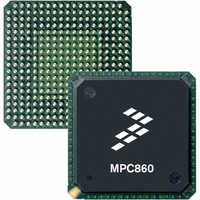MC68360VR25VL Freescale Semiconductor, MC68360VR25VL Datasheet - Page 305

MC68360VR25VL
Manufacturer Part Number
MC68360VR25VL
Description
IC MPU QUICC 25MHZ 357-PBGA
Manufacturer
Freescale Semiconductor
Datasheets
1.MC68EN360VR25L.pdf
(14 pages)
2.MC68EN360VR25L.pdf
(2 pages)
3.MC68360AI25L.pdf
(962 pages)
Specifications of MC68360VR25VL
Processor Type
M683xx 32-Bit
Speed
25MHz
Voltage
3.3V
Mounting Type
Surface Mount
Package / Case
357-PBGA
Family Name
M68000
Device Core
ColdFire
Device Core Size
32b
Frequency (max)
25MHz
Instruction Set Architecture
RISC
Operating Supply Voltage (max)
3.3V
Operating Supply Voltage (min)
2.7V
Operating Temp Range
0C to 70C
Operating Temperature Classification
Commercial
Mounting
Surface Mount
Pin Count
357
Package Type
BGA
Lead Free Status / RoHS Status
Lead free / RoHS Compliant
Features
-
Lead Free Status / Rohs Status
Compliant
Available stocks
Company
Part Number
Manufacturer
Quantity
Price
Company:
Part Number:
MC68360VR25VL
Manufacturer:
Exar
Quantity:
160
Company:
Part Number:
MC68360VR25VL
Manufacturer:
Freescale Semiconductor
Quantity:
10 000
Company:
Part Number:
MC68360VR25VLR2
Manufacturer:
Freescale Semiconductor
Quantity:
10 000
- Current page: 305 of 962
- Download datasheet (4Mb)
the RAS signal of the DRAM bank. This RAS signal will remain active until another DRAM
bank is accessed. The page size is determined by the PGS bits in the GMR.
If a different bank of DRAM is accessed, followed by an access to a DRAM bank on which
page mode is selected, then the DRAM controller negates the RAS signal to the other bank
and asserts the particular RAS line for the page mode bank, followed by the rest of the
DRAM access. This is called a page mode normal cycle.
On each access to a DRAM bank in which the page mode is enabled and the previous
DRAM cycle was to that bank, the address of the last access to this bank is compared to the
current address. If the two addresses fall within the same page, then the access cycle
begins immediately with the assertion of the column address and CAS signal. This is called
a page hit.
In case of a page miss (the address of the last access and current address do not fall within
the same page), the RAS signal must be negated and held high for a period that matches
the value programmed in the WBTQ control field of the current DRAM region, and then a full
cycle (including row and column phases) is executed. This is the slowest DRAM access
since the RAS signal must first be negated, followed by the precharge time.
Since it is difficult to predict the performance impact of page mode, the user may wish to try
the application software with and without page mode enabled, and compare the results. The
ability to concentrate the code/data accesses into the same page of the DRAM is central to
achieving a performance improvement.
Some systems will need an additional wait state to perform write cycles during a page hit.
To gain a wait state, set the delay write cycle for the QUICC DWQ bit in the GMR of the
DRAM bank.
6.12.3 DRAM Burst Access Support
The DRAM controller supports burst accesses made by an external MC68EC040 (or other
MC68040 family member) if the BACK40 bit is set in the BR. The MC68EC040 requests a
burst to be performed with a line-fill indication on the SIZx pins (SIZ = 11) and the TTx pins.
In this case, the DRAM controller performs a normal access (RAS and CAS), followed by
requests to the DRAM for the next three sequential long-word operands (CAS only). The
DRAM controller automatically increments the addresses to the DRAM using the BADDR3–
BADDR2 pins.
The length of an MC68EC040 burst cycle can be distinguished from the length of the initial
access with the BCYC bits of the OR.
Page mode is supported only for the internal QUICC cycles or
external MC68030/QUICC cycles.
If any two DRAM banks overlap each other in their address
space, page mode must not be selected for either of those
banks.
Freescale Semiconductor, Inc.
For More Information On This Product,
MC68360 USER’S MANUAL
Go to: www.freescale.com
NOTES
System Integration Module (SIM60)
Related parts for MC68360VR25VL
Image
Part Number
Description
Manufacturer
Datasheet
Request
R
Part Number:
Description:
Manufacturer:
Freescale Semiconductor, Inc
Datasheet:

Part Number:
Description:
MC68360 MC68360 Multiple Ethernet Channels on the QUICC
Manufacturer:
Motorola / Freescale Semiconductor

Part Number:
Description:
MC68360 Implementing an 8 bit Eprom for an MC68EC040-MC68360 System
Manufacturer:
Motorola / Freescale Semiconductor

Part Number:
Description:
MC68360 Interfacing the MC68060 to the MC68360
Manufacturer:
Motorola / Freescale Semiconductor

Part Number:
Description:
MC68360 MC68360 RAM Microcode Package Option Overview
Manufacturer:
Motorola / Freescale Semiconductor

Part Number:
Description:
MC68360 MC68360 CPM-CPU Interaction
Manufacturer:
Motorola / Freescale Semiconductor

Part Number:
Description:
MC68360 Interfacing SDRAM to the MC68360 QUICC Device
Manufacturer:
Motorola / Freescale Semiconductor

Part Number:
Description:
MC68360 Interfacing the QUICC to a MCM516400 (4Mx4 10-12 column-row) DRAM
Manufacturer:
Motorola / Freescale Semiconductor

Part Number:
Description:
MC68360 Interfacing the 68360 (QUICC) to T1-E1 Systems
Manufacturer:
Motorola / Freescale Semiconductor

Part Number:
Description:
MC68360 Multiple QUICC Design Concept
Manufacturer:
Motorola / Freescale Semiconductor
Part Number:
Description:
Manufacturer:
Freescale Semiconductor, Inc
Datasheet:
Part Number:
Description:
Manufacturer:
Freescale Semiconductor, Inc
Datasheet:
Part Number:
Description:
Manufacturer:
Freescale Semiconductor, Inc
Datasheet:
Part Number:
Description:
Manufacturer:
Freescale Semiconductor, Inc
Datasheet:
Part Number:
Description:
Manufacturer:
Freescale Semiconductor, Inc
Datasheet:











